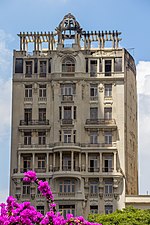B3 (stock exchange)

B3 S.A. - Brasil, Bolsa, Balcão (in English, B3 - Brazil Stock Exchange and Over-the-Counter Market), formerly BM&FBOVESPA, is a stock exchange located in São Paulo, Brazil, and the second oldest of the country. At the end of 2011 it had a market capitalization of R$2.37 trillion, making it the 13th largest stock exchange in the world. However, owing to the slump in economic growth in Brazil associated with political problems, in addition to the strengthening of the United States dollar against the Brazilian real, the capitalization shrank to R$2.21 trillion by the end of 2015. Its current form can be traced back to May 8, 2008, when the São Paulo Stock Exchange (Bovespa) and the Brazilian Mercantile and Futures Exchange (BM&F) merged, creating BM&FBOVESPA. On March 30, 2017, BM&FBOVESPA merged with CETIP, creating B3. The benchmark indicator of B3 is the Índice Bovespa, more commonly known as Ibovespa. There were 354 companies traded at Bovespa as of March 31, 2020.On June 7, 2021, the Ibovespa index reached its record market closing above 130,776 points.B3 also has offices in Rio de Janeiro, Shanghai, and London.
Excerpt from the Wikipedia article B3 (stock exchange) (License: CC BY-SA 3.0, Authors, Images).B3 (stock exchange)
Rua Três de Dezembro, São Paulo Sé
Geographical coordinates (GPS) Address Nearby Places Show on map
Geographical coordinates (GPS)
| Latitude | Longitude |
|---|---|
| N -23.546388888889 ° | E -46.634166666667 ° |
Address
Rua Três de Dezembro 17
01014-020 São Paulo, Sé
São Paulo, Brazil
Open on Google Maps











